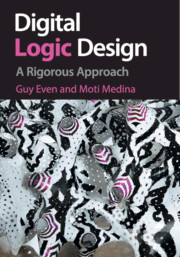BibliographyCohen, D.On holy wars and a plea for peace. Computer, 14(10):48–54, 1981.
Ercegovac, M.D., and T., Lang. Digital arithmetic. Morgan Kaufmann, 2003.
Ercegovac, M.D., J.H., Moreno, and T., Lang. Introduction to digital systems. John Wiley, New York, 1998.
Hopcroft, J.E., R., Motwani, and J.D., Ullman. Introduction to automata theory, languages, and computation. Vol. 3. Addison-Wesley, Reading, MA, 1979.
Howson, C.Logic with trees: Introduction to symbolic logic. Routledge, 1997.
Karnaugh, M.The map method for synthesis of combinational logic circuits. Transactions of the AIEE. I, 72(9):593–599, 1953.
Litman, A.Lecture notes in digital design (in Hebrew). Faculty of Computer Science, Technion, 2003.
Mattson, H.F.Discrete mathematics with applications. John Wiley, New York, 1993.
McCluskey, E.J.Minimization of Boolean functions. Bell Systems Technical Journal, 35(5):1417–1444, 1956.
McEliece, R.J., C., Ash, and R.B., Ash. Introduction to discrete mathematics. Random House, New York, 1989.
Müller, S.M., and W.J., Paul. The complexity of simple computer architectures. Springer Lecture Notes in Computer Science, Vol. 995. Springer, New York, 1996.
Patterson, D.A., and J.L., Hennessy. Computer organization and design: The hardware/software interface. Morgan Kaufmann, 1994.
Quine, W.V.The problem of simplifying truth functions. American Mathematical Monthly, 59(8):521–531, 1952.
Quine, W.V.A way to simplify truth functions. American Mathematical Monthly, 62(9):627–631, 1955.
Savage, J.E.Models of computation: Exploring the power of computing. Addison-Wesley Longman, Boston, 1997.
Ward, S.A., and R.H., Halstead. Computation structures. MIT Press, Cambridge, MA, 1990.





